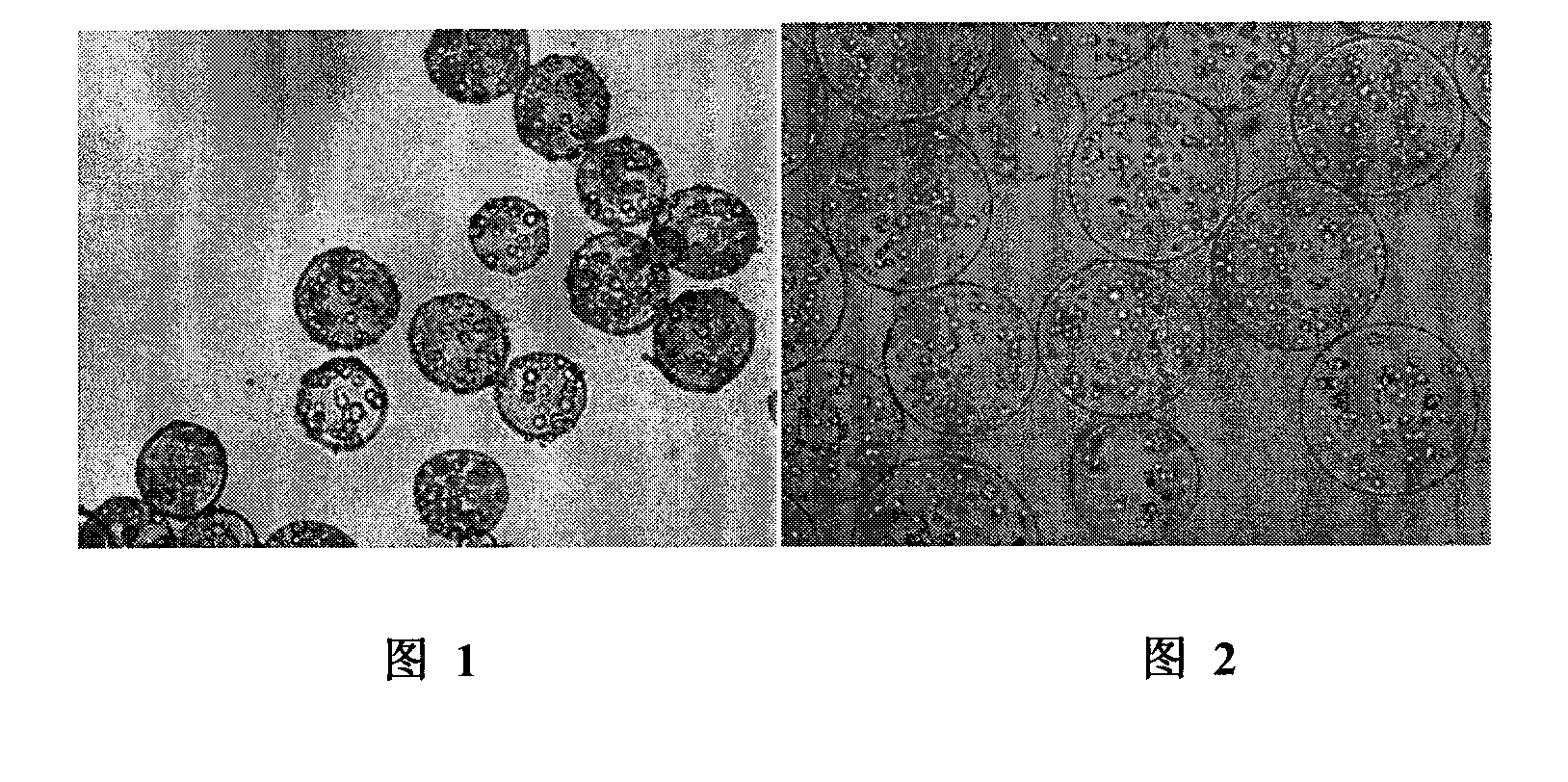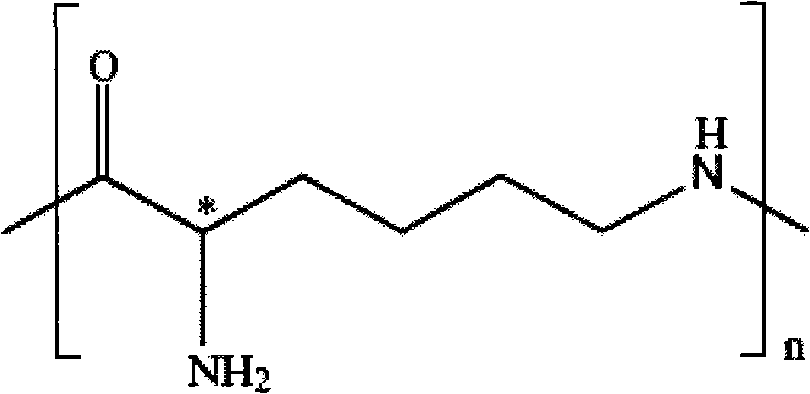Preparation method of alginate/epsilon-polylysine/alginate biological microcapsule
An alginate gel, alginate technology, applied in microcapsule preparation, microsphere preparation, microcapsule and other directions, can solve the problem of limited application of sodium alginate/α-polylysine microcapsule, poor biocompatibility , high price and other problems, to achieve the effect of low cost, mild reaction conditions and safe use
- Summary
- Abstract
- Description
- Claims
- Application Information
AI Technical Summary
Problems solved by technology
Method used
Image
Examples
Embodiment 1
[0025] 1) Preparation by high-voltage electrostatic method [Qu Beibei, Yu Weiting, Liu Xiudong, etc., preparation of monodisperse calcium alginate microgel beads by high-voltage electrostatic method, Acta Chemical Industry, 2005, 56(8): 1547] for embedding Calcium alginate gel microspheres with CHO cells, the initial cell seeding density was 1×10 6 / mL sodium alginate solution.
[0026] 2) Under the condition of 37°C, immerse the calcium alginate gel microspheres prepared above into 0.05% (w / v), pH5.5, ε-polylysine (Mw10KDa) / normal saline solution, CHO / seaweed The volume ratio of calcium acid gel microspheres and ε-PLL solution was 1:40, reacted for 10 minutes to prepare ε-AP microcapsules, and then washed 3 times with normal saline.
[0027]3) Under the temperature condition of 37°C, immerse the ε-AP microcapsules prepared above in a sodium alginate (Mw200KDa) / 0.9% (w / v) NaCl solution with a concentration of 0.05% (w / v), CH0 / ε -AP microcapsules and sodium alginate solution ...
Embodiment 2
[0032] 1) Using high-voltage electrostatic method [Qu Beibei, Yu Weiting, Liu Xiudong, etc., preparation of monodisperse calcium alginate microgel beads by high-voltage electrostatic method, Acta Chemical Industry, 2005, 56(8): 1547] to prepare embedding Calcium alginate gel microspheres with hepatocytes-HepG2 cells, the initial cell seeding density was 1×10 6 / mL sodium alginate solution.
[0033] 2) Under the condition of 37°C, immerse the calcium alginate gel microspheres prepared above into 0.1% (w / v), pH6.5, ε-polylysine (Mw30KDa) / normal saline solution, HepG2 / seaweed The volume ratio of calcium acid gel microspheres and ε-PLL solution was 1:20, reacted for 15 minutes to prepare ε-AP microcapsules, and then washed 3 times with normal saline.
[0034] 3) Under the temperature condition of 37°C, immerse the ε-AP microcapsules prepared above in the sodium alginate (Mw300KDa) / 0.9% (w / v) NaCl solution with a concentration of 0.1% (w / v), HepG2 / ε The volume ratio of -AP microc...
Embodiment 3
[0038] 1) Using high-voltage electrostatic method [Qu Beibei, Yu Weiting, Liu Xiudong, etc., preparation of monodisperse calcium alginate microgel beads by high-voltage electrostatic method, Acta Chemical Industry, 2005, 56(8): 1547] to prepare embedding Calcium alginate gel microspheres with embryonic stem cells (ES) at an initial seeding density of 1×10 6 / mL sodium alginate solution.
[0039] 2) Under the condition of 37°C, immerse the calcium alginate gel microspheres prepared above into 0.2% (w / v), pH6.5, ε-polylysine (Mw50KDa) / normal saline solution, ES / seaweed The volume ratio of calcium acid gel microspheres and ε-PLL solution was 1:10, reacted for 15 minutes to prepare ε-AP microcapsules, and then washed 3 times with normal saline.
[0040] 3) Under the temperature condition of 37°C, immerse the ε-AP microcapsules prepared above in the sodium alginate (Mw400KDa) / 0.9% (w / v) NaCl solution with a concentration of 0.2% (w / v), ES / ε - AP microcapsules and sodium alginate ...
PUM
| Property | Measurement | Unit |
|---|---|---|
| molecular weight | aaaaa | aaaaa |
| degree of polymerization | aaaaa | aaaaa |
| degree of polymerization | aaaaa | aaaaa |
Abstract
Description
Claims
Application Information
 Login to View More
Login to View More - R&D
- Intellectual Property
- Life Sciences
- Materials
- Tech Scout
- Unparalleled Data Quality
- Higher Quality Content
- 60% Fewer Hallucinations
Browse by: Latest US Patents, China's latest patents, Technical Efficacy Thesaurus, Application Domain, Technology Topic, Popular Technical Reports.
© 2025 PatSnap. All rights reserved.Legal|Privacy policy|Modern Slavery Act Transparency Statement|Sitemap|About US| Contact US: help@patsnap.com



